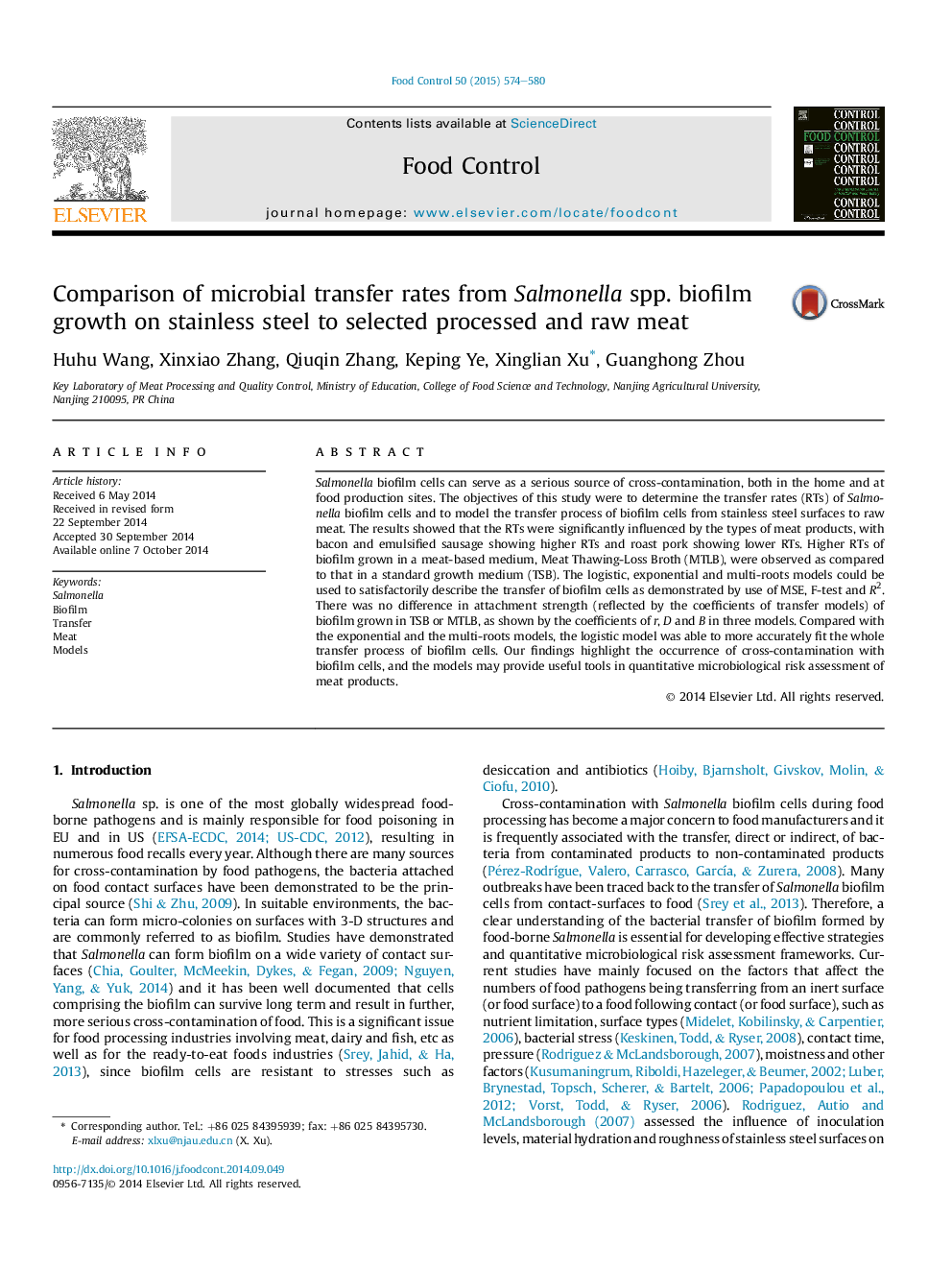| Article ID | Journal | Published Year | Pages | File Type |
|---|---|---|---|---|
| 6391099 | Food Control | 2015 | 7 Pages |
Abstract
Salmonella biofilm cells can serve as a serious source of cross-contamination, both in the home and at food production sites. The objectives of this study were to determine the transfer rates (RTs) of Salmonella biofilm cells and to model the transfer process of biofilm cells from stainless steel surfaces to raw meat. The results showed that the RTs were significantly influenced by the types of meat products, with bacon and emulsified sausage showing higher RTs and roast pork showing lower RTs. Higher RTs of biofilm grown in a meat-based medium, Meat Thawing-Loss Broth (MTLB), were observed as compared to that in a standard growth medium (TSB). The logistic, exponential and multi-roots models could be used to satisfactorily describe the transfer of biofilm cells as demonstrated by use of MSE, F-test and R2. There was no difference in attachment strength (reflected by the coefficients of transfer models) of biofilm grown in TSB or MTLB, as shown by the coefficients of r, D and B in three models. Compared with the exponential and the multi-roots models, the logistic model was able to more accurately fit the whole transfer process of biofilm cells. Our findings highlight the occurrence of cross-contamination with biofilm cells, and the models may provide useful tools in quantitative microbiological risk assessment of meat products.
Keywords
Related Topics
Life Sciences
Agricultural and Biological Sciences
Food Science
Authors
Huhu Wang, Xinxiao Zhang, Qiuqin Zhang, Keping Ye, Xinglian Xu, Guanghong Zhou,
